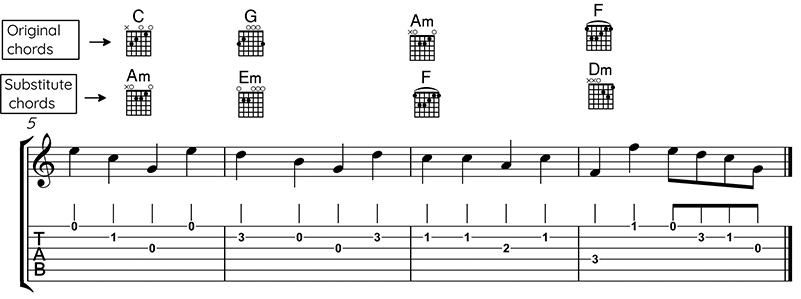Songwriting Hacks: Relative Major & Minor Diatonic Chord Substitution
Songwriting Hacks: Relative Major & Minor Diatonic Chord Substitution
Hi songwriters. The title might sound a bit complex but this a relatively simple and cool idea to have in your songwriting tool belt – relative major & minor diatonic chord substitution.
It’s a methodology that’s used a lot by producers like Max Martin, and songwriters such as our very own Mr Neil Finn, who has said he uses the technique to create contrast between song sections, maybe following a happy verse (major) with relative minor substitutes chords to create sad chorus or bridge section.
1. The first thing to understand is what the Major and relative Minor diatonic chords are. Diatonic simply means the chords that belong to the scale, and this is simply done by building a chord on each note of the scale, by stacking 3rds on each scale. (Don’t worry if you are not quite getting what I’m on about, play though the examples below and you will soon catch on.)
See Ex 1 – C major diatonic triads. Since every major scale is made up of the pattern of tones and semitones the order of the chords is the same. We use Roman numerals to label the chords.
2. Every major scale has a relative minor scale. All you have to do is simply count 6 scale notes (degrees) up the major scale to get the relative minor. So let’s take Cmaj scale and count up 6 notes: C D E F G A, so the relative minor to C major is A minor.
So we get A B C D E F G A; 1 2 3 4 5 6.
Now let’s build diatonic triads of the Amin scale by simply stacking 3rds on each note of minor scale as we did with the major scale. See Ex 2 the diatonic triads of Amin.
3. The next step is to simply write out the Cmaj diatonic triads and then write out the A relative min triads underneath the Cmaj diatonic triads. See Ex 3.
Here’s how this songwriting hack works. We’ll take a common chord progression from the key of Cmaj I V vimin IV = C, G, Amin, and F.
We can substitute the same progression to the A relative min diatonic chords. So instead of playing C we sub Amin, for G we can sub Emin, for Amin we can sub F, for F we can sub Dmin. See Ex 4.
There are so many combinations you can use with this simple chord progression. For example, say you have written a song with four chords looping throughout the whole song. That’s all good, but this new technique is great for adding contrast within the track – for example a happy verse in Maj and a sad chorus using sub-min chords.
Another cool thing is you can still sing your original melody over the top of the new substitute chords. See Ex 5.
Hum or record the melody on your phone, then play the chords over the top. Listen to how the chord choice affects the melody.
Note that you don’t have to use every sub-chord, maybe just replace one chord in the progression. You can also go from a minor key to a major substitute, just reverse the process.
Have fun!
Johnny Fleury teaches guitar, bass and singer-songwriter hack lessons. Call or txt 027 274 0285.






